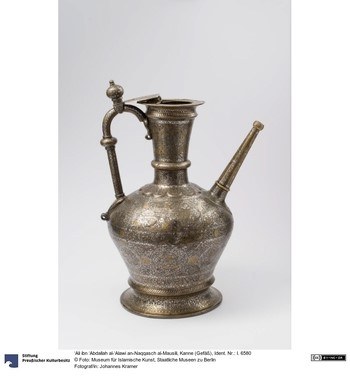Water jug from Mosul, 13th century
by
—
last modified
2023-07-13T10:47:56+02:00
Museum of Islamic Art of the National Museums in Berlin - Prussian Cultural Heritage, Ident. No. I. 6580, CC BY-SA 4.0
Contributors: Johannes Kramer
Museum of Islamic Art of the National Museums in Berlin - Prussian Cultural Heritage, Ident. No. I. 6580, CC BY-SA 4.0
Jug (vessel), color photography, unknown year, photographer: Johannes Kramer; source: Museum of Islamic Art of the National Museums in Berlin - Prussian Cultural Heritage, Ident. No. I. 6580, https://id.smb.museum/object/1525417, Creative Commons Attribution-ShareAlike 4.0 International (CC BY-SA 4.0), https://creativecommons.org/licenses/by-sa/4.0/.


 Creative Commons Attribution-ShareAlike 4.0 International (CC BY-SA 4.0),
Creative Commons Attribution-ShareAlike 4.0 International (CC BY-SA 4.0),